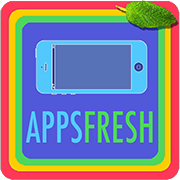Next, the instructor progresses with the development of an iPhone application that interfaces with the Vision Large Language Model (LLM) to procure a description of a captured photograph using Swift within Xcode. They iterate that in the preceding lecture, they established the LLM server with a Vision LLM and now endeavor to replicate a similar functionality within iOS. Consequently, the instructor introduces a new method denoted as “generateDescriptionFromImageFromPrivateServer,” supplanting the prior “generateTextWithPrivateServer.” Given the transition from text to images, the instructor establishes a new variable for the image URL and integrates the new method within the viewDidLoad method of the view controller for testing purposes. Finally, they scrutinize the method’s signature and verify the accurate implementation of completion handling.
Additionally, in this segment of the video, the speaker elucidates the preparation of Swift code for interfacing with the Vision Large Model (LLM) in part 1, specifically focusing on displaying the result obtained from a server. To facilitate this process, they acquire the image URL, sourced from an exemplar image within LM Studio. Subsequently, the speaker embeds the image URL into the Xcode code and acknowledges the impending need to finalize the method code in the subsequent lecture, as the current iteration lacks a definitive result.

Please sign up here to subscribe to the AI tutorials
In the next video labeled “0072 Writing Network call to interact with Vision LLM part 2,” the presenter elucidates the process of converting an image URL into base64 format to facilitate its utilization in a network request. Initially, they procure the content of the image URL and convert it into image data, employing the exclamation point syntax to ensure accurate data retrieval. Subsequently, they transform the image data into a base64 encoded string, a requisite for network requests. Lastly, they delve into crafting the network call body by referencing the Vision LLM model in Python, stressing the necessity of adapting the approach for iOS code. The audience is encouraged to concentrate on formulating the body in the subsequent lecture.

Please sign up here to subscribe to the AI tutorials
In the next lecture titled “0073 Vision network call body payload,” the speaker details the process of crafting the request body payload for the Description Vision LLM in LM Studio for vision. They start by examining an existing request body in Xcode and intend to replicate certain elements in LM Studio. The speaker inserts “model” before “message” and “local-model” in the request body while establishing separate elements for “role” and “content.” The “content” is specified as a text type with an image URL, which is added as an array with a data URL encoded in base64. After rectifying indentation issues and eliminating redundant elements, the speaker finalizes the request body payload.

Please sign up here to subscribe to the AI tutorials
